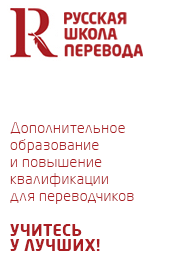The many colours of our world still always dazzle us
Pavel Palazchenko, Russian Translation Company
Originally published on April, 2 2009 in Russia Beyond the Headlines, a supplement sponsored by Rossiyskaya Gazeta. The complete issue is also available in e-paper format (Adobe Flash Player required).
The recent election campaign in the US was so widely covered in the Russian media that almost everyone now seems to know what red states and blue states mean; some even know the meaning of purple, the battleground states.
Yet, the use of red for “Republican” still sounds odd to most Russians, and may well be forgotten until the next elections in the United States.
Colours mean different things across cultures, but they always evoke feelings. Their symbolic, or metaphoric, meanings are often similar from one culture to another – and the coincidences are far from accidental. Yet those making forays into new terrain have to be alert to differences, both linguistic and cultural.
In this global society, the more recent the metaphorical meaning of a colour the more likely it is to be the same in languages as different as, say, English, Russian and Arabic.
Thus, green represents the environmental movement in many languages, especially after the formation of the Green Party in Germany. Of course, in English a similar meaning had existed long before, as in the green finger, the natural skill for growing plants. This is an idiom in English only.
Similarly, Shakespeare’s green-eyed monster, or jealousy, is something that never made its way into the Russian language. (I am told that green eye means envy in Arabic; it is probably not Shakespearean.) And when Russians refer to alcohol as “zelenyi zmiy” (green serpent) they are using the colour in a way unfamiliar to other cultures.
Going back to red, its symbolism is much more varied in English than in Russian – or in some other languages, for that matter. Red tape for bureaucracy, paint the town red for having a good time, or red herring for diversion are all typically English.
It is useful to know that Moscow’s Red Square is a well-entrenched mistranslation: The old use of the word “krasnaya” stands for beautiful, the same as in the archaic “krasnaya devitsa”, meaning a beautiful girl.
The wider use of red in Russian is constrained by the political red, as in Communist.
There are no such constraints on black, gray or white. As in other languages, black often stands for anything that is illegal. Like the speakers of English or French, we speak of a black market; we also call under-the-table payments black salaries (wages that are barely legal are grey salaries). Somewhat surprisingly, the use of black in the broad sense of bad is not as widespread in Russian as in English.
Blue, as in feeling blue, or brown, are colours that Russians do not use for describing despair or low spirits.
The distinction between colours embedded in a language and colours as cultural symbols may sometimes be vague but has to be borne in mind. An interesting case is yellow. In Russian we speak of yellow press – something that is more often called tabloid press in English. But we have no tradition of tying a yellow ribbon for an absent loved one; this is American only. And for us yellow can never mean cowardice, as in yellow-belly.
Yellow stands for mourning in the Egyptian culture, and for courage in Japan. Years ago, I was advised not to give yellow flowers to a girl: yellow was said to be the colour of faithlessness.
Yet, it seems that globalisation is gradually imposing greater uniformity in the cultural meaning of yellow. Yellow pages are making their way into Russian, yellow cabs are running in dozens of countries, and ambulances are turning yellow in Europe as part of a plan to introduce uniform colour for emergency vehicles throughout the European Union.
After such a nice and, hopefully, safe discussion of languages and cultures, I hate to go back to politics, but how about those revolutions that everyone was talking about a few years ago?
In my research, of all of them only the Orange Revolution in Ukraine had a real colour in its name. The Bulldozer Revolution in Serbia in 2000 may be in the same category politically but had no colour attached to it. The subsequent Rose Revolution in Georgia and the Tulip Revolution in Kyrgyzstan were named for the flowers that their supporters carried; both seem to be botanically related to the Cedar Revolution in Lebanon in 2005.
So there is perhaps a limit to how much colours can do in politics.
- Войдите на сайт для отправки комментариев







Последние комментарии
5 лет 34 недели назад
5 лет 44 недели назад
6 лет 22 недели назад
6 лет 41 неделя назад
7 лет 1 неделя назад
8 лет 26 недель назад
8 лет 26 недель назад
8 лет 48 недель назад
8 лет 48 недель назад
9 лет 7 недель назад